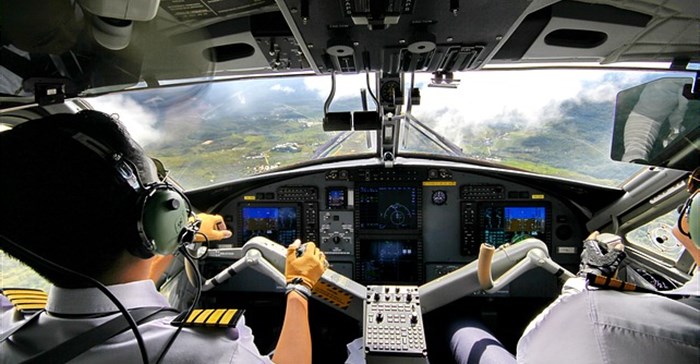Global pilot shortage could see SA pilots lured overseas

Currently, according to commercial aviation consultancy AirInsight, the global supply of commercial airline pilots is estimated at 281,000. Airbus and Boeing both foresee strong traffic growth continuing, with Boeing projecting global demand for 558,000 pilots by 2034.
AirInsight, including more conservative Airbus projections, puts the estimate at 428,988 pilots by 2034. Therefore, even the more conservative estimate is for a 53% growth in commercial pilots over today’s numbers. Their report states: “The first impacts of the pilot shortage are being manifest already. The problem is, therefore, significant.”
In fact, since AirInsight’s projections, Boeing has increased its 20-year projection to 617,000 new commercial airline pilots, a 10.5% increase over its 2015 outlook. This unprecedented demand will be driven by record orders which will see the world’s airliner fleet almost double from 23,000 aircraft in 2014 to a 44,500 by 2033.
The most conservative outlook represents a global requirement for about 21,500 new airline pilots annually, or over 400 pilots per week. Of these, at least half will need to be pilots with years of experience, globally recognised training and the skills and acumen acquired through thousands of hours of airline flying. According to SAA Pilots Association (SAAPA), most of the 750 pilots of South African Airways meet these requirements and have a cumulative total of over 12,000 years of experience at SAA alone.
Signs of pilot shortage
The International Air Transport Association (IATA) projects a 4.15% annual growth in airline traffic. With traffic growth comes a need for more seats on more aircraft and additional crews to fly these aircraft. Due to this unprecedented worldwide demand for skilled pilots, ICAO, the International Civil Aviation Organisation, published an information paper in January 2015:Potential Safety Risks Caused By Pilot Shortage.
There are already many signs of the pilot shortage. During October, Ryanair, Europe’s number one airline, announced that it is to launch a major recruitment drive for 1,000 pilots as it plans to take delivery of 50 new aircraft in the next 12 months. Eddie Wilson, Ryanair’s “Chief People Officer”, said in a media release its aircraft numbers would grow from 355 to over 500 in the next five years.
According to a report in Bloomberg, Chinese airlines alone need to hire approximately 100 pilots a week for the next 20 years to meet accelerating travel demand. Facing a shortage of candidates at home, these airlines are offering lucrative pay packages to foreigners with cockpit experience, and are active in Johannesburg at the moment to fill their needs for experienced airline captains.
Air traffic across China is set to almost quadruple over the next 20 years, making it the fastest growing market, according to Airbus Group SE. Air transport is booming in China, where the fleet more than tripled in a decade to 2,650 according to the Civil Aviation Industry Statistics Report. As a result, some of these carriers are paying about 50% more than what some senior captains earn in the United States. This means that pilots in emerging markets such as South Africa could quadruple their salaries.
SAA could lose large numbers of pilots
SAAPA chairman Captain Jimmy Conroy, says he fears the local airline industry and the country may lose a large number of pilots to international airlines. “SAA has a normal attrition rate of 15 - 25 pilots per year. Recent negative publicity together with hostility from certain quarters has caused some pilots at SAA to re-evaluate their career options.
Foreign carriers looking for suitably trained pilots realise that SAA may be a source of scarce skills to be exploited. In doing so, they obtain experienced pilots at little or no cost. To compound this problem, South African Airways (SAA) is currently not training any new pilots through its previously highly successful Cadet Training Programme, which had until recently, been making substantial inroads into the transformation of the pilot profession in South Africa. SAA currently employs 74 of the 83 black Airline Transport Pilot licence holders in South Africa.”
He adds that he is aware of 60 pilots who had left various South African carriers to take up positions with foreign carriers over the last 12 months. “Most of them took up positions with Middle Eastern carriers. South African licences were recently recognised by the Chinese aviation authorities, which further opens the market to experienced South African airline pilots.”
Conroy concludes that pilot training anywhere in the world is very expensive, and that there are aviation colleges who train pilots but few pilots are sponsored by airlines in South Africa, with none currently sponsored by SAA. “According to 20-year industry projections, it is clear that the shrinking pool of experienced or future pilots, is going to heat up competition among global carriers for the best and most proficient pilots. SAA, in this scenario, can ill afford to lose any pilots.”